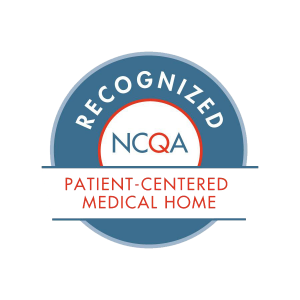
Your health care providers at Pacific Medical Group want to work with you to give the best medical care possible. We believe that the more you know about keeping in good health, and dealing with your conditions, the better we can work together.
What is diabetes? What are the types?
Diabetes Mellitus is a disease in which glucose (sugar) rises to high levels in the blood. Normally, insulin (a hormone made in the pancreas) helps bring glucose from the blood, into body cells to use for energy. With DM, there may be inadequate amount of insulin and/or the body cells may be resistant to insulin action. Glucose levels rise in the blood, and in time, lead to complications with damage to blood vessels and tissue in eyes, nerves, heart, kidney, and other areas.
Type 1 Diabetes is usually discovered in children and young adults. The body produces little or no insulin because the pancreas has been mistakenly damaged by the body’s immune system. Those with Type 1 Diabetes need regular insulin shots to control sugars and prevent complications.
Gestational Diabetes occurs with pregnancy in some women and can complicate the course of their pregnancy unless controlled. Most women with Gestational Diabetes will have sugars return to normal after delivery. These women are at higher risk for developing Type 2 Diabetes later in life.
(DM2), the most common type, occurs mostly in adults. Initially, insulin levels may be normal, but with resistance from cells in the body to the action of insulin, sugars rise. The pancreatic Beta cells try to compensate by making extra insulin. With time, these cells may wear out, insulin production drops, and sugars rise in the blood even further.
What are the Risk Factors?
Risks for developing Type 2 Diabetes include a Family History of diabetes and advancing age. Most DM2 patients are overweight, and many are under active. Some ethnicities are at higher risk for this as well.
Diabetes is a serious disorder with serious consequences – but it is manageable. With good control, people with Diabetes can have healthy lives for years.
What are the treatments for diabetes?
What to do? Get to your ideal weight by keeping active and eating a healthy diet. Learn how to check your sugars, and keep track regularly. Stop using tobacco, smoking or chew.
When you decide with your Health Care Provider that Diabetes Medications are needed, take them regularly. Let your provider know if you have questions or concerns. Metformin is one commonly used medication for DM2. It works to decrease insulin resistance. Sulfonamides are another oral medication type often used (Glyburide or Glipizide are two types); these stimulate the body to make more insulin.
If medications by mouth are not enough, insulin injections can help fill the body’s need. Lantus is a 24 hr type of Insulin that many people start on; there are also very quick acting insulins to just cover the short time around meals, and more intermediate acting insulin formulations.
How is Diabetes Diagnosed?
If a person has high risk factors for Diabetes, symptoms that may suggest diabetes, or is just found to have high random blood sugar levels (or less sensitive, in the urine), then testing may be done to confirm Diabetes, and assess severity. These may include:
Fasting Glucose
After 12 hours with no calories (water is fine)
Diagnosis of Diabetes – blood sugar results of 126 or above on two separate occasions PreDiabetes (Impaired Fasting Glucose) – blood sugars in the 110 – 125 range. Some clinicians feel sugars above 100 are in this range.
HAIC (Hemoglobin A1c)
A test used both for diagnosis and monitoring Diabetes. Hemoglobin is a protein in red blood cells, and sugar in the blood can stick to this protein. The more sugar, the more protein gets stuck with it. Red blood cells get recycled every 3 months or so, hence checking this test gives an idea of how much sugar has been in the blood over 3 months – not just at the time of testing.
Oral Glucose Tolerance Test
After fasting 8-12 hours, a 75gm sugar drink is given. Two hours later, a glucose test is run.
Indicates Diabetes – Glucose > 200; PreDiabetic – Glucose levels 140 – 199.
Gestational Diabetes is diagnosed by tests similar to Oral Glucose tolerance tests.
Diabetes is a serious disorder with serious consequences – but it is manageable. With good control, people with Diabetes can have healthy lives for years.
Resources and Supporting Links
- Medline Plus, from National Library of Medicine, National Institutes of Health
- FamilyDoctor / AAFP
- Type 1 Diabetes – Nemour’s Pediatrics Hospital system (also cited by Medline Plus)
- Type 2 Diabetes (DM2) – American Diabetes Association
- DM2 symptoms – National Diabetes Information Clearing House (NDIC) the National Institute for Diabetes & Digestive & Kidney Diseases (NIDDK)
- DM2 Meds – American Diabetes Association, Medication
- Women with Gestational Diabetes – Medline Plus (Available in Spanish)
- Risk factors for Diabetes
- HAIC (Hemoglobin A1c)
- Fasting Glucose
- Keeping Active – CDC
- Eating a healthy diet. – American Diabetes Association, Food
- Learn how to check your sugars – Mayo Clinic
- Diabetes Medications – American Diabetes Association, Medication section.
- Insulin injections can help – MedlinePlus
- Diabetic Retinopathy – American Association of Ophthalmology, Eye Smart.
- Diabetic Foot Care – Foot Health Facts
- Immunizations – CDC
- Influenza – CDC
- Pneumonia shot – CDC
- Body Mass Index Calculator
- Food & Fitness Planner – Web MD
- Check Your Sugars – ADA
- Stop Using Tobacco – Web MD
Related Links
- Body Mass Index Calculator
- Tool: ASCVD Risk Estimator
- Diabetes: Track Blood Pressure & Glucose (Pacific Medical Group Excel Sheet) (If document does not open, click SAVE)
- Hypertension Tracking Tool (Pacific Medical Group Excel Sheet) (If document does not open, click SAVE)


